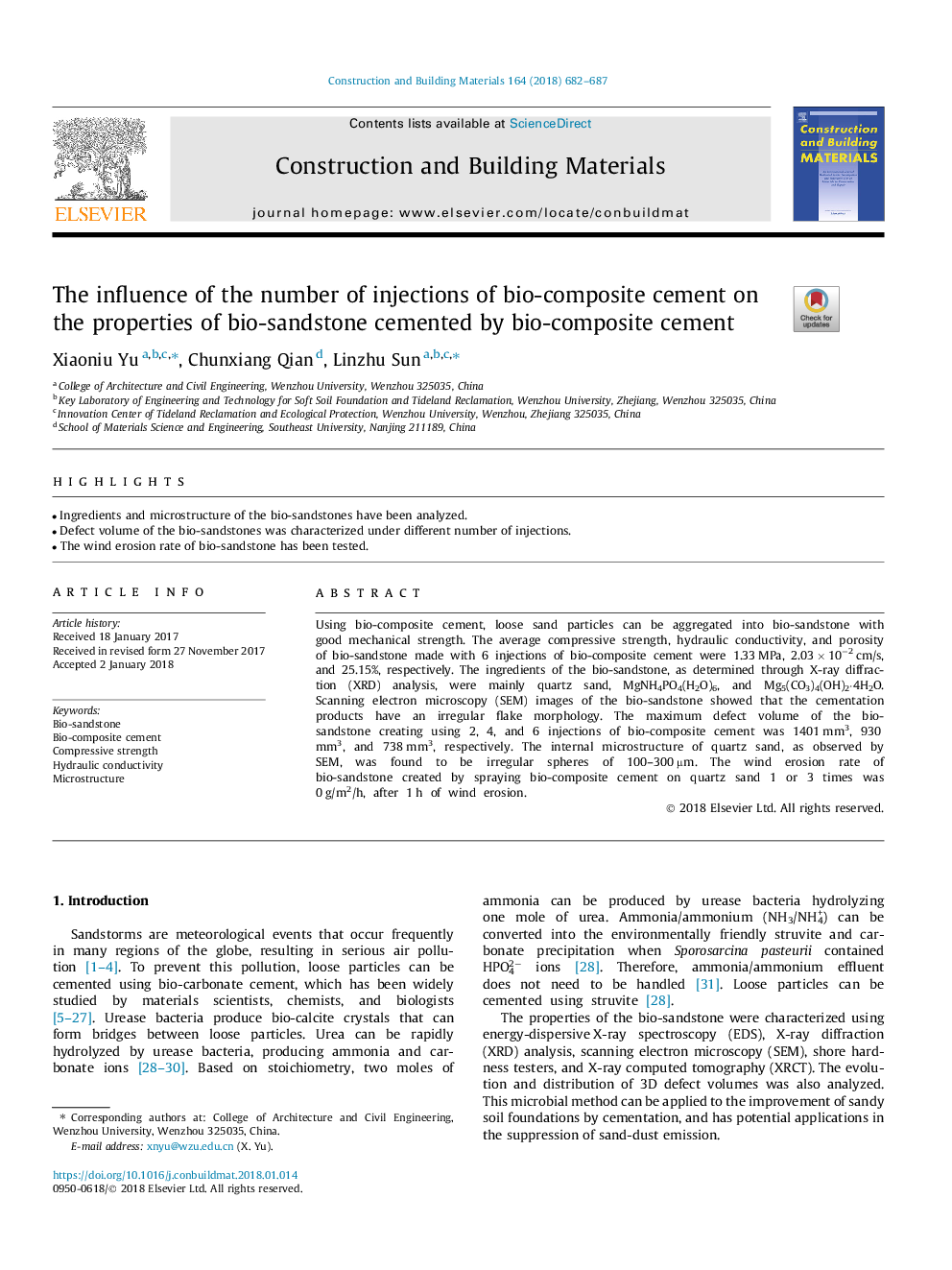| Article ID | Journal | Published Year | Pages | File Type |
|---|---|---|---|---|
| 6716100 | Construction and Building Materials | 2018 | 6 Pages |
Abstract
Using bio-composite cement, loose sand particles can be aggregated into bio-sandstone with good mechanical strength. The average compressive strength, hydraulic conductivity, and porosity of bio-sandstone made with 6 injections of bio-composite cement were 1.33â¯MPa, 2.03â¯Ãâ¯10â2â¯cm/s, and 25.15%, respectively. The ingredients of the bio-sandstone, as determined through X-ray diffraction (XRD) analysis, were mainly quartz sand, MgNH4PO4(H2O)6, and Mg5(CO3)4(OH)2·4H2O. Scanning electron microscopy (SEM) images of the bio-sandstone showed that the cementation products have an irregular flake morphology. The maximum defect volume of the bio-sandstone creating using 2, 4, and 6 injections of bio-composite cement was 1401â¯mm3, 930â¯mm3, and 738â¯mm3, respectively. The internal microstructure of quartz sand, as observed by SEM, was found to be irregular spheres of 100-300â¯Âµm. The wind erosion rate of bio-sandstone created by spraying bio-composite cement on quartz sand 1 or 3 times was 0â¯g/m2/h, after 1â¯h of wind erosion.
Related Topics
Physical Sciences and Engineering
Engineering
Civil and Structural Engineering
Authors
Xiaoniu Yu, Chunxiang Qian, Linzhu Sun,
